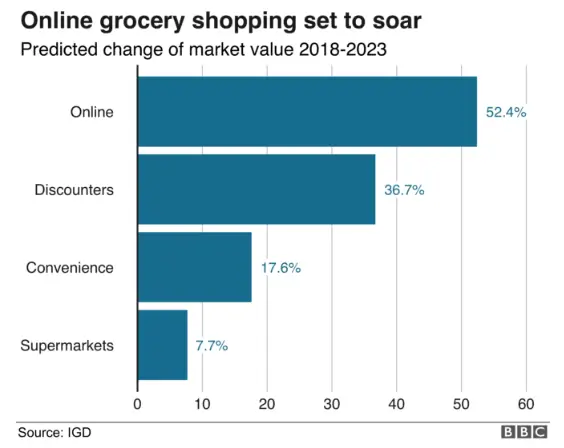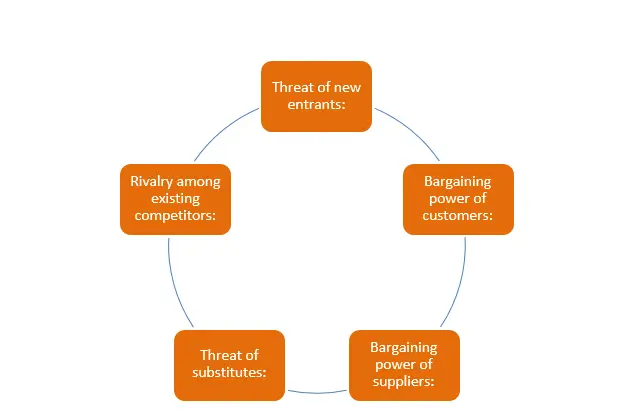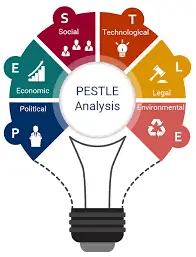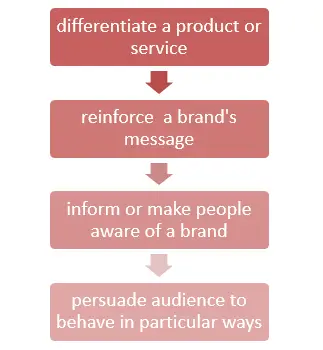Marks and Spencer Company's Marketing Strategy: In-dept Analysis
The UK’s top-notch assignment writing service, Native Assignment Help, specialises in providing unparalleled quality and outstanding customer satisfaction through our free case study. Our dedicated team can readily assist you with challenging essays or intricate research papers. Choose Native Assignment Help today and experience firsthand what a reliable and committed partner can achieve for you.
Introduction: Marks and Spencer Company's Marketing Strategy In-dept Analysis
This report will provide an in-depth analysis of Marks & Spencer's marketing strategy. The report also appraises the firm’s use of a variety of marketing communication tools and how it has built-in online and offline media to attach consumers. In adding up, the report will examine the control of data analytics on the firm’s marketing decisions and review the accomplishment of its marketing campaigns (Kauffmann, et. al. 2020). By investigate these aspects of company’s marketing strategy, the report will aspire to provide insight into how the industry navigates the complex marketing atmosphere and successfully communicates with its intention audience.
Company Profile
Marks & Spencer (M&S) is a British international trader, headquartered in London, UK. The firm operates in the retail sector, deliberately in the areas of clothing, food, and home products. The company has over 975 stores across the UK, and also includes an online presence. The firm employs over 76,000 people wide-reaching (Hallikainen, et. al. 2020). The business is known for its own-brand products, which include clothing, food, and home commodities. They have a strong pledge to sustainability and moral practices, and have set a number of determined goals to decrease its environmental impact. In recent years, the business has faced challenges in the extremely competitive retail industry, and has undergone important restructuring and cost-cutting measures to develop its profitability.
_66acc8612a2eb.webp)
Figure 1: Marks & Spencer (M&S)
The Capability Maturity Model Integration (CMMI) is an arrangement used to assess and improve a company’s software development procedure, and it includes a ability pyramid that describes an organization's ripeness in various areas (Maroufkhani, et. al. 2020). Though, the company is a retailer rather than a software progress corporation, it is not really suitable to apply the ability pyramid to their operation.
That being said, it is merit note that the business has been investing in digital technologies in recent years, including big data analytics. The firm has implemented various analytics tools to get better its considerate of customer behavior and preference, and to optimize its operations. For instance, the company has used analytics to get better its, forecasting, supply chain management and pricing strategies.
In 2020, the firm also announced a partnership with Microsoft to investigate the use of artificial intelligence (AI) in retail operations (Sheng, et. al. 2021). This included the growth of a new "store of the future" concept that would integrate AI-powered features such as modified recommendations and concurrent inventory tracking.
Online Marketplace: Digital Marketing Environment Analysis
An online market is a digital platform where numerous sellers can list and sell their products or services to a big pool of potential buyer. These marketplaces are often functioning by third-party firms, and they provide a expedient way for both buyers and sellers to manage business online. Online marketplaces can be classified based on the types of products or services being sold, such as business-to-business products, customer goods, or services (Dong and Yang, 2020). Digital marketing environment analysis involves study the online marketplace to recognize opportunities, trends, and threats that may impact a business's marketing approach. This analysis may include factors such as customer behavior, technological advancements, competitive landscape, and regulatory changes.

Figure 2: M&S and Ocado to start home delivery service next year
Micro-Environment Analysis
Integrating Porter's 5 Forces analysis for the case company:
| Threat of new entrants: | Moderate the retail industry in the UK is highly bloodthirsty, but barriers to entry are comparatively low, which could make it easier for new players to penetrate the market. |
| Bargaining power of customers: | High Consumers have a wide assortment of choices when it comes to purchasing food, clothing, and home supplies, which gives them important bargaining power (Shamim, et. al. 2020). |
| Bargaining power of suppliers: | Moderate The case company has significant purchasing power due to its size and market position, but supplier also has bargain power due to the significance of their products to M&S's business. |
| Threat of substitutes: | High There are many substitutes available for the products that the company sells, mainly in the clothing and food category. |
| Rivalry among existing competitors: | High The UK retail market is tremendously competitive, with many well-established players vying for market share (Dewi, 2020). The business faces intense competition from a diversity of retailers, both online and offline |

Figure 3: Porter five forces
Customers
Consumers are considerable to the company because they are the decisive source of revenue for the business. Understanding client requirements, preference, and behavior is essential for the business to develop and offer products that meet their opportunity and drive sales. In the UK, customer spending trends have been prejudiced by a range of factors, as well as changes in shifts in economic conditions, consumer behavior, and the impact of technological advancements (Shankar, et. al. 2022). For instance, the COVID-19 pandemic has led to a main boost in online shopping and a shift towards more sustainable and principled products.
Competitors
The company faces competition from a variety of retailers in the UK market, including both conventional brick-and-mortar stores and online retailers. Some of company’s key competitors include Tesco a leading UK supermarket chain that also offers clothing and home goods. Another one is John Lewis a well-established department store chain that offers a variety of products, including home goods, fashion, and electronics (Charlesworth, 2020). These competitors were chosen because they offer alike products to the case company and are entrenched brands in the UK retail market.
Suppliers
The company mainly relies on a range of suppliers to offer the products it sells in its stores and online. The business has a strong commitment to principled and sustainable sourcing, and works intimately with suppliers to ensure that their products meet company’s standards. Though, the company also faces challenges in securing consistent and cost-effective suppliers, mainly for its clothing and home goods products.
Macro-Environmental Analysis
1. Why SLEPTS approach?
The SLEPTS approach is a structure used in strategic analysis to review the external factors that may affect a business. This approach is helpful because it provides a structured way to recognize and examine the external factors that may impact a industry (Wang, 2020). By considering each of these factors independently, businesses can gain a more nuanced consideration of the external environment and the opportunities and threats that may be present.
Social factors
This external aspect of the case company refers to the factors connected to society and culture that may impact the firm’s operations and business approach. Some key social external factors that may have an effect on M&S includes changes in demographics, such as the aging populace or shifts in ethnic and literary diversity, may impact company’s customer base and their preference for certain products. This also include changes in consumer behavior and lifestyle trends, such as the rising demand for sustainable and morally produced products or the shift towards online shopping, may impact the products and services that organization offers. People are more concerns about health and wellness, such as the growing interest in plant-based diets or the impact of climate change on food production may manipulate the products that firm offers and the way they market their goods (Angeloni and Rossi, 2021). The changes in social values and norm such as the increasing significance of diversity and inclusion, may impact company’s branding and marketing strategies. By considering these social external factors, the company can better understand the requirements and preferences of their clientele and adapt their business strategy consequently.
Technological
The growth of e-commerce and online shopping has altered the way customers shop for goods, including clothing and food. The case company has responded to this trend by rising their investment in their online store and delivery capability. The extensive use of smartphones and mobile devices has shaped new opportunities for retailers to connect with clientele through mobile apps and other digital channel. The company has developed a mobile app that allows clientele to shop and admittance their loyalty program (Faizurrohman, et. al. 2021). Advances in artificial intelligence and data analytics have enable businesses to collect and examine large amounts of data, which can be used to improve purchaser experience and inform business decisions. The company has used data analytics to better understand consumer preferences and develop targeted marketing campaigns. The growing network of associated devices, or the Internet of Things (IoT), has the budding to transform the way retailer track supply chains, manage inventory, and provide modified customer experiences. The company has used IoT technology to get better inventory management and optimize store layouts (Garcia, et. al. 2022). By considering these technological external factors, the company can adapt their business strategy to take benefit of new opportunities and stay bloodthirsty in the retail industry.
Sustainability
This refers to the practices that hold up the long-term wellbeing of the environment and the community in which a business operates. The following are some key sustainability external factors that might affect the company. Customers are becoming more conscious of the ecological impact of the goods they purchase, including food and clothing. The company has responded to this trend by introduce sustainable clothing appearance and reducing the use of plastic in their packaging. International organizations and Governments are implementing regulations to improve worker rights, reduce greenhouse gas emissions, and protect natural resources. The company has committed to reducing their greenhouse gas emissions and improving the sustainability of their supply chain (Pucihar, et. al. 2019). Customers, Investors, and other stakeholders are more and more demanding that businesses take action to address social and environmental issues. M&S has respond to stakeholder activism by introducing a sustainable growth plan that includes targets for reducing greenhouse gas emissions, improving water usage, and promoting sustainable agriculture. New technology and materials are being urbanized that can reduce the ecological impact of production process and products. M&S has introduce new clothing lines made from sustainable materials, such as natural cotton and recycled polyester.

Figure 4: SLEPT model
Integrated Marketing Communication
Integrated Marketing Communication (IMC) is a strategic technique to marketing that involves coordinate and integrating various communication channels and promotional methods to transport a clear and reliable message to a target audience.
IMC involves combine various elements of the marketing mix, including public relations, advertising, sales promotion, personal selling, direct marketing, and digital marketing, into a coordinated and unified message that is deliver through various communication channels (Ulubeyli, et. al. 2019). The goal of IMC is to generate a seamless and dependable brand message that is communicated to the target spectators across all touchpoints, whether it is throughout traditional advertising or digital channels such as social media or email marketing.
The DRIP model is a structure for planning and executing marketing infrastructure. This includes:
- Differentiate: To stand out from competitors, a business needs to distinguish its products or services. This can be done by emphasize unique benefits, features, or values. Differentiation is significant because it helps the business capture the concentration of the target audience and create a strong brand image.
- Reinforce: Once the corporation has differentiated itself, it requirements to reinforce its message to make sure that it stays top-of-mind with the target spectators (Künle and Minke, 2022). Reinforcement can be achieving through brand imagery, reliable messaging, and communication channels.
- Inform: The company needs to inform its target audience about its goods or services. This can be done through various announcement channels, such as public relations, advertising, or content marketing. The objective of informing the target audience is to build alertness and generate interest in the firm’s products or services.
- Persuade: Lastly, the corporation needs to persuade its target audience to take action, such as making a buy or signing up for a service. This can be achieving through various tactics, such as direct marketing, sales promotions, or influencer marketing. The objective of persuasion is to convert attention into action and generate revenue for the company.

Figure 5: DRIP model
Advertising
The company has a long-standing reputation for excellence and affordability, and its advertising campaigns reflect this. The company uses various forms of advertising, including print ads, television commercials, and online banners, to differentiate it from competitors, reinforce its brand message, and notify consumers about its products and services (Muhammedrisaevna, et. al. 2020). For instance, company’s Christmas advertising campaigns often feature heartwarming stories that strengthen the company's values of tradition, quality, and family. These ads differentiate M&S from competitors by emphasizing the emotional value of its products somewhat than just their features and benefits. By constantly using this theme in its advertising, the company reinforces its brand message and builds a strong emotional connection with its consumers.
Sales Promotion
The company uses sales promotions to incentivize clientele to make purchases and to distinguish it from competitors. This can take many forms, such as discounts, coupons, and special offers. For example, the company often runs promotions during key shopping periods, such as Black Friday and the lead-up to Christmas (Laurie and Mortimer, 2019). These promotions strengthen the brand's value proposal of quality and affordability by offering discount on high-quality products. By organization these promotions constantly, the company reinforces its brand message and encourages consumers to make purchases.
Direct and Digital Marketing
The company uses direct and digital marketing to notify and influence customers about its products and services. This includes social media, email marketing, and direct mail campaigns. For instance, M&S uses email marketing to notify customers about new sales promotions, product launches, and special offers. These campaigns distinguish company from competitors by highlighting the excellence and affordability of its products. By using targeted messaging and personalization, company reinforces its brand message and builds a stronger connection with its customers.
Integration of Online (Digital) and Offline (Traditional) Media
Clear and comprehensively analysis of how the company integrates online and offline media
Marks & Spencer is a UK-based retailer that has effectively incorporated online and offline media to create a consistent marketing campaign. The firm’s marketing strategy involves using both customary and digital channels to arrive at its target audience and engage them with pertinent messaging (Porcu, et. al. 2019).
- Cross-Channel advertising: Company uses cross-channel advertising to make sure that its messaging is reliable across all touchpoints. For instance, the business might run a TV ad campaign that promote a specific product line, and then follow up with targeted online ads that emphasize the same products. This approach helps the business reach a wider audience and reinforce its message.
- Omnichannel shopping experience: Company has also created an omni-channel shopping knowledge that flawlessly blends online and offline interactions. For instance, clientele can browse products online and then pick them up in-store, or vice versa. This advance not only makes it easier for clientele to shop but also allow the company to track customer behavior across channels and personalize the shopping knowledge.
- Social Media campaigns: The company uses social media to connect with its clientele and promote its products. For instance, the company might run a Twitter or Instagram campaign that encourages clientele to share photos of them wearing Marks & Spencer's clothing. This approach not only creates user-generated contented but also helps the business reach a wider audience through social media sharing.
Analyze the marketing campaign decisions and influence of data analytics.
The company uses data analytics to notify its marketing campaign decisions. The company collects and analyzes data on customer behavior across channel, including online and offline connections. This data helps the business understand customer preferences, recognize trends, and personalize its messaging. For instance, the business might use data analytics to recognize which products are most well-liked among its target audience, and then create targeted marketing campaigns that endorse those products.
1. How was integration achieved?
Integration was achieved by the business through a mixture of cross-channel advertising, an omni-channel shopping practice, and social media campaigns. These strategies were planned to create a impeccable knowledge for customers, in spite of whether they were interact with the trade online or offline. By integrating online and offline media, the corporation was able to improve its reach and reinforce its messaging across all touch points. This approach was significant because it allowed the business to engage with consumers in a more customized and significant way, ultimately leading to enlarged brand loyalty and sales.
social media metrics
Social media metrics can be used to compute the impact of these integration strategies. For instance, company’s social media campaigns may have generate a certain number of likes, shares, and comments. These metrics can be used to measure the effectiveness of the movement and to identify opportunities for improvement.
1. What is the analysis telling the reader?
Integration of online and offline media is critical for creating a unified marketing campaign that engage customers across all touch points. By using a mixture of cross-channel advertising, an omnichannel shopping knowledge, and social media campaigns, company was able to reach a wider customers and strengthen its messaging in a more personalized and significant way. In addition, the company's use of data analytics to inform its marketing campaign decisions highlights the significance of data-driven insights in today's marketing scenery (Rachmawati, and Afifi, 2022). The analysis highlights the implication of integration and data analytics in creating a booming marketing campaign.
Let Native Assignment Help boost your marketing assignment! Our seasoned experts develop assignments that demonstrate your skill set, from market research to digital strategy. Maintain an upper hand over others in your marketing course with our custom care and attain academic distinction with ease.
Conclusion
The report is concluded with the marketing environment that has a momentous impact on the company’s marketing strategy. The business operates in a highly competitive market and must constantly become accustomed its marketing efforts to meet altering consumer demands and preference. The business has productively integrated its marketing communications by using a mixture of cross-channel advertising, an omni-channel shopping experience, and social media campaign. By doing so, the company has created consistent brand knowledge across all touch-points and increased its reach to wider viewers.
The firm’s use of relevant data to notify its marketing decisions has also been critical to the achievement of its campaigns. By using data analytics, the company has been able to identify preferences, trends, and consumer behavior, allowing the business to tailor its marketing efforts to meet the requirements of its target audience. The company has succeed in executing its marketing campaign decisions by integrate its online and offline media and using pertinent data to inform its strategies. The success of the company's campaign can be seen in its enhanced brand loyalty, sales growth, and positive consumer sentiment.
References
Angeloni, S. and Rossi, C., 2021. An analytical model for comparing the profitability of competing online marketing channels: Search engine marketing versus e-commerce marketplace. Journal of Marketing Theory and Practice, 29(4), pp.534-549.
BBC.com, 2019. M&S and Ocado to start home delivery service next year, (Online). <https://www.bbc.com/news/business-47383159 > accessed on 13.05.2023.
Buhalis, D. and Volchek, K., 2021. Bridging marketing theory and big data analytics: The taxonomy of marketing attribution. International Journal of Information Management, 56, p.102253.
Charlesworth, A., 2020. Absolute essentials of digital marketing. Routledge.
corporate.marksandspencer.com, 2023. Marksandspencer (M&S), (Online).< https://corporate.marksandspencer.com/ > accessed on 11.05.2023.
Dewi, N.P.R.C., 2020. Digital marketing strategy on travel tourism businesses in marketing 4.0 era. International Research Journal of Management, IT and Social Sciences, 7(3), pp.58-64.
Dong, J.Q. and Yang, C.H., 2020. Business value of big data analytics: A systems-theoretic approach and empirical test. Information & Management, 57(1), p.103124.
Faizurrohman, M., Baga, L.M. and Jahroh, S., 2021. Strategy of business digitalization of micro, small, and medium entreprises (a case study of cultive apparel). Indonesian Journal of Business and Entrepreneurship (IJBE), 7(3), pp.257-257.
Garcia, F.T., Ten Caten, C.S., de Campos, E.A.R., Callegaro, A.M. and de Jesus Pacheco, D.A., 2022. Mortality Risk Factors in Micro and Small Businesses: Systematic Literature Review and Research Agenda. Sustainability, 14(5), p.2725.
Hallikainen, H., Savimäki, E. and Laukkanen, T., 2020. Fostering B2B sales with customer big data analytics. Industrial Marketing Management, 86, pp.90-98.
Kauffmann, E., Peral, J., Gil, D., Ferrández, A., Sellers, R. and Mora, H., 2020. A framework for big data analytics in commercial social networks: A case study on sentiment analysis and fake review detection for marketing decision-making. Industrial Marketing Management, 90, pp.523-537.
Künle, E. and Minke, C., 2022. Macro-environmental comparative analysis of e-mobility adoption pathways in France, Germany and Norway. Transport Policy, 124, pp.160-174.
Laurie, S. and Mortimer, K., 2019. How to achieve true integration: the impact of integrated marketing communication on the client/agency relationship. Journal of Marketing Management, 35(3-4), pp.231-252.
Maroufkhani, P., Tseng, M.L., Iranmanesh, M., Ismail, W.K.W. and Khalid, H., 2020. Big data analytics adoption: Determinants and performances among small to medium-sized enterprises. International journal of information management, 54, p.102190.
Muhammedrisaevna, T.M.S., Bayazovna, G.N. and Kakhramonovna, D.A., 2020. Goal and objectives of integrated marketing communications. Economics, (2 (45)), pp.5-7.
Porcu, L., del Barrio-García, S., Alcántara-Pilar, J.M. and Crespo-Almendros, E., 2019. Analyzing the influence of firm-wide integrated marketing communication on market performance in the hospitality industry. International Journal of Hospitality Management, 80, pp.13-24.
Pucihar, A., Lenart, G., Kljajić Borštnar, M., Vidmar, D. and Marolt, M., 2019. Drivers and outcomes of business model innovation—Micro, small and medium-sized enterprises perspective. Sustainability, 11(2), p.344.
Rachmawati, M.A. and Afifi, S., 2022. The integrated marketing communication in digital environment: a case study of local radio in Yogyakarta. The Indonesian Journal of Communication Studies, 14(2), pp.105-119.
Shamim, S., Zeng, J., Khan, Z. and Zia, N.U., 2020. Big data analytics capability and decision making performance in emerging market firms: The role of contractual and relational governance mechanisms. Technological Forecasting and Social Change, 161, p.120315.
Shankar, V., Grewal, D., Sunder, S., Fossen, B., Peters, K. and Agarwal, A., 2022. Digital marketing communication in global marketplaces: A review of extant research, future directions, and potential approaches. International Journal of research in Marketing, 39(2), pp.541-565.
Sheng, J., Amankwah‐Amoah, J., Khan, Z. and Wang, X., 2021. COVID‐19 pandemic in the new era of big data analytics: Methodological innovations and future research directions. British Journal of Management, 32(4), pp.1164-1183.
Ulubeyli, S., KAZANCI, O., Kazaz, A. and Arslan, V., 2019. Strategic Factors Affecting Green Building Industry: A Macro-Environmental Analysis Using PESTEL Framework. Sakarya University Journal of Science, 23(6), pp.1042-1055.
Wang, F., 2020. Digital marketing capabilities in international firms: a relational perspective. International Marketing Review, 37(3), pp.559-577.



